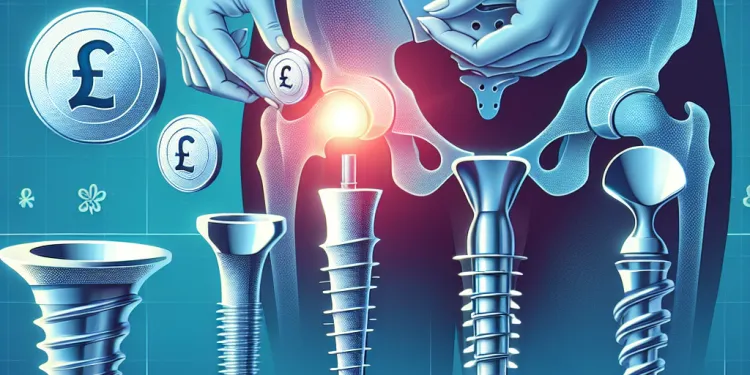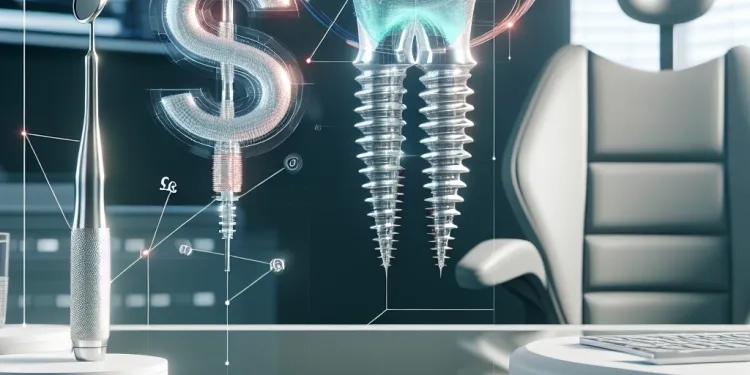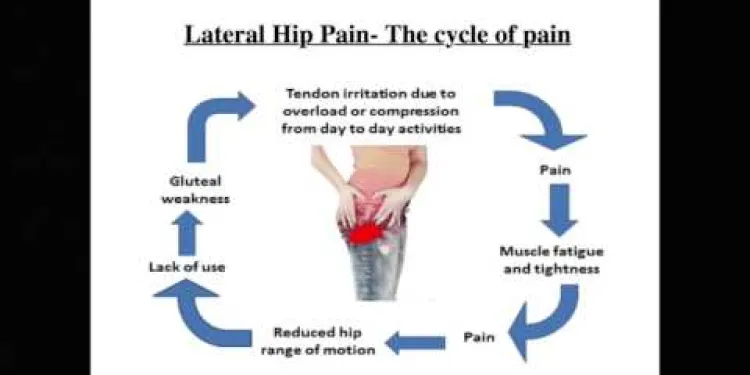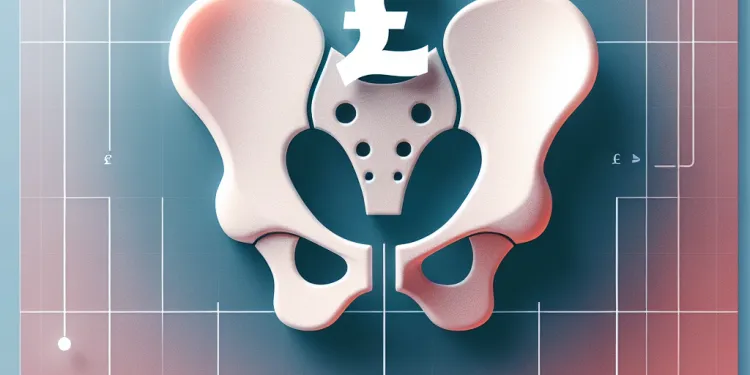
Find A Professional
More Items From Ergsy search
-

Are there different types of hip implants?
Relevance: 100%
-

What is a hip replacement?
Relevance: 68%
-

Joint School - Hip Exercises
Relevance: 67%
-

What British Council Scholarships/Bursaries may be available to help me with the education costs of my child?
Relevance: 55%
-

Hip replacement
Relevance: 52%
-

Can both hips be replaced at the same time?
Relevance: 51%
-

What is minimally invasive hip replacement surgery?
Relevance: 50%
-

Can relationship problems be resolved to improve mental health?
Relevance: 50%
-

Can I get dental implants on the NHS?
Relevance: 49%
-

A journey to hip surgery
Relevance: 49%
-

Can ending a toxic relationship improve my mental health?
Relevance: 49%
-

Exercises to help your lateral hip pain
Relevance: 48%
-

Is it better to stay in a relationship for the sake of not being alone?
Relevance: 48%
-

Osteoarthritis of the Hip
Relevance: 48%
-

What are the benefits of relationship counselling?
Relevance: 47%
-

Is it normal to feel sad in a relationship sometimes?
Relevance: 46%
-

How long do hip replacement implants last?
Relevance: 46%
-

Total hip replacement
Relevance: 45%
-

Can physical symptoms be linked to relationship-induced depression?
Relevance: 44%
-

Does the National Trust offer internships?
Relevance: 44%
-

How can a relationship contribute to depression?
Relevance: 44%
-

Do I need a Hip Replacement?
Relevance: 44%
-

What are the risks associated with hip replacement surgery?
Relevance: 43%
-

Total Hip Replacement
Relevance: 43%
-

Advice - How to manage your lateral hip pain
Relevance: 42%
-

Osteoarthritis of the Hip
Relevance: 42%
-

What are the signs that my relationship is making me depressed?
Relevance: 41%
-

How does the new Sleep Apnea Chip work?
Relevance: 41%
-

Total hip replacement at Northumbria Healthcare
Relevance: 40%
-

Are there any self-care strategies to cope with relationship-induced depression?
Relevance: 40%
-

How much does hip replacement surgery cost in the UK?
Relevance: 39%
-

Are there any apprenticeship routes to becoming an NHS nurse?
Relevance: 38%
-

7 Signs Your Relationship is Making You Depressed
Relevance: 38%
-

How long does a hip replacement surgery take?
Relevance: 38%
-

Will I need physical therapy after a hip replacement?
Relevance: 32%
-

Is it possible to feel trapped in a relationship?
Relevance: 31%
-

Am I eligible to try the new sleep apnea chip?
Relevance: 30%
-

What type of anaesthesia is used during hip replacement surgery?
Relevance: 29%
-

What is the recovery time for a hip replacement?
Relevance: 28%
-

Should I seek professional help if my relationship is making me depressed?
Relevance: 27%
Are There Different Types of Hip Implants?
Hip implants are medical devices used to replace a damaged or worn-out hip joint, providing relief from pain and improving mobility. For patients requiring hip replacement surgery, understanding the various types of hip implants is crucial in making informed decisions. In the UK, the availability and choice of hip implants depend on several factors, including the patient's age, lifestyle, and the specific condition of the hip joint.
Cemented Hip Implants
Cemented hip implants are a popular choice among patients, especially older adults. These implants use a special bone cement to secure the implant to the existing bone. The cement acts as a filler, providing immediate stability and allowing the patient to bear weight soon after surgery. Cemented implants are often preferred for patients with lower bone density as they provide a reliable fixation regardless of the bone quality.
Uncemented Hip Implants
Uncemented hip implants, also known as press-fit implants, rely on the natural growth of the bone into the surface of the implant for stability. They are often coated with a special porous material that encourages bone integration over time. While these implants may take longer to stabilize compared to their cemented counterparts, they can potentially offer a longer-lasting solution due to the natural bond that forms between the bone and implant. Younger, more active patients are often candidates for uncemented hip implants.
Hybrid Hip Implants
Hybrid hip implants combine features of both cemented and uncemented implants. This type of implant typically includes a cemented femoral component and an uncemented acetabular component. Hybrid implants aim to provide the benefits of both methods, offering immediate stability with the potential for long-term integration. Surgeons may recommend hybrid implants for patients who require a balanced approach.
Metal-on-Metal Hip Implants
Metal-on-metal hip implants consist of a metal ball and metal socket. These implants were designed to be more durable and reduce wear and tear. However, they have fallen out of favor due to concerns about metal ions release, which can lead to complications. In the UK, metal-on-metal implants are less commonly used today, with surgeons opting for alternative materials that offer similar benefits without the associated risks.
Ceramic and Polyethylene Options
Ceramic-on-ceramic and ceramic-on-polyethylene implants are alternatives that provide excellent wear resistance. Ceramics offer a hard, smooth surface, reducing friction and wear. The polyethylene used in these implants is a durable plastic that helps cushion the joint, extending the implant's lifespan. These materials are especially suitable for younger patients who require a longer-lasting solution.
Conclusion
There are several types of hip implants available in the UK, each with its advantages and considerations. The choice of implant depends on various factors, including age, activity level, and bone quality. It is essential for patients to discuss options with their orthopaedic surgeon to ensure a personalized approach that best suits their needs.
Are There Different Types of Hip Implants?
Hip implants are tools used by doctors to fix a bad hip joint. They help reduce pain and make it easier to move. If you need hip replacement surgery, it's important to know about the different types of hip implants. In the UK, the type of hip implant you can get depends on things like your age, how active you are, and how healthy your hip joint is.
Cemented Hip Implants
Cemented hip implants are often used for older people. These implants use a special glue to stick the implant to the bone. This glue helps the implant stay in place and lets you walk soon after surgery. Cemented implants work well for people with weak bones, as they stay in place even if the bone isn't very strong.
Uncemented Hip Implants
Uncemented hip implants, also called press-fit implants, stick to the bone by letting bone grow into them. They have a special surface that bone grows into over time. These implants may take a bit longer to become stable. But, they can last longer because they become part of the bone. Younger, more active people often get uncemented hip implants.
Hybrid Hip Implants
Hybrid hip implants use parts from both cemented and uncemented implants. One part uses glue to stay in place, while the other part uses bone growth. Hybrid implants try to give the good points of both types. Doctors might suggest them for people who need both quick stability and long-term results.
Metal-on-Metal Hip Implants
Metal-on-metal hip implants have a metal ball and a metal socket. They were made to be strong and last a long time. But, they can release tiny metal bits, which can cause problems. Because of this, they are not used as much anymore in the UK. Doctors now choose other materials that are safer but still strong.
Ceramic and Polyethylene Options
Ceramic-on-ceramic and ceramic-on-polyethylene implants are other choices. They are very good at not wearing out. Ceramic is hard and smooth, so it causes less friction. Polyethylene is a strong plastic that helps cushion the joint. These are good for younger people who need implants to last a long time.
Conclusion
There are different types of hip implants in the UK. Each type has good and bad points. The right implant for you depends on your age, how active you are, and how strong your bones are. It's important to talk to your doctor about which implant is best for you.
Frequently Asked Questions
What are the main types of hip implants?
The main types of hip implants are metal-on-plastic, ceramic-on-plastic, ceramic-on-ceramic, and metal-on-metal.
What is a metal-on-plastic hip implant?
A metal-on-plastic hip implant involves a metal femoral head (ball) and a plastic acetabular component (socket).
What are the advantages of metal-on-plastic implants?
Metal-on-plastic implants are durable, cost-effective, and have a long history of successful use.
What is a ceramic-on-plastic hip implant?
A ceramic-on-plastic hip implant uses a ceramic femoral head and a plastic acetabular component.
Why choose a ceramic-on-plastic implant?
Ceramic-on-plastic implants offer a reduced risk of wear and are less likely to produce metal ions.
What is a ceramic-on-ceramic hip implant?
A ceramic-on-ceramic hip implant features both a ceramic femoral head and a ceramic acetabular component.
What are the benefits of ceramic-on-ceramic implants?
Ceramic-on-ceramic implants have low wear rates and a decreased risk of metal ion release.
What is a metal-on-metal hip implant?
A metal-on-metal hip implant consists of a metal femoral head and a metal acetabular component.
Are metal-on-metal implants still used?
Metal-on-metal implants are less common due to concerns over metal ion release and potential tissue reactions.
How do I choose the right hip implant type?
The choice of hip implant depends on factors like age, activity level, and specific medical conditions. A doctor can provide guidance.
Can hip implants cause allergies?
Some patients may experience allergic reactions to certain metals used in hip implants, such as nickel.
What factors influence the longevity of a hip implant?
Factors include the implant material, surgical techniques, patient activity level, and overall health.
Are there hip implants specifically for younger patients?
Yes, some implants are designed for younger, more active patients to provide durability and longevity.
Can implant materials affect imaging tests like MRIs?
Some metal implants can distort MRI results, while ceramic and plastic components generally do not.
What is the typical recovery time after hip replacement surgery?
Recovery time varies but generally ranges from 6 weeks to 3 months for most patients.
How often do hip implants need to be replaced?
Hip implants typically last 15 to 20 years, but individual experiences can vary.
Are there alternative procedures to hip implants?
Alternative procedures include hip resurfacing and partial hip replacement, depending on the patient's condition.
What are the risks associated with metal-on-metal implants?
Risks include metal ion release, adverse local tissue reactions, and potential need for revision surgery.
Can ceramic hip implants break?
While rare, ceramic components can fracture. Advances in materials have significantly reduced this risk.
What is the role of polyethylene in hip implants?
Polyethylene is widely used for the socket component due to its durability and low friction properties.
What are the main types of hip implants?
Hip implants are parts doctors use to fix a hip joint. There are a few big types:
- Metal-on-plastic: This type has a metal ball and a plastic cup. It is very common.
- Ceramic-on-plastic: This has a ceramic ball and a plastic cup. It lasts a long time.
- Ceramic-on-ceramic: Both the ball and cup are ceramic. This type is very smooth.
- Metal-on-metal: Here, both the ball and cup are metal. This type is less used now.
Some tools to help understand more:
- Use videos and pictures to see how hip implants work.
- Ask a doctor for simple words if you have questions.
The main types of hip implants are:
- Metal on plastic
- Ceramic on plastic
- Ceramic on ceramic
- Metal on metal
To help understand this, try using pictures of hip implants. Also, you can watch videos about hip implants to make it easier to learn.
What is a metal-on-plastic hip implant?
A metal-on-plastic hip implant is a fake hip joint. It has two main parts:
- The ball, made of metal, which replaces the top part of your leg bone.
- The socket, made of strong plastic, which replaces the hip socket in your body.
This new hip helps you move better if your old hip is hurt or worn out. If you find reading hard, you can ask someone to help you understand this or use a tool that reads text out loud to you.
A hip implant helps fix a sore hip joint. One kind is called metal-on-plastic. It has a metal ball and a plastic cup.
What is good about metal-on-plastic implants?
Metal-on-plastic implants are special parts doctors use in the body. Here's what is good about them:
- Long-lasting: They work well and last a long time.
- Less wear: The metal and plastic don't rub down quickly.
- Safe: They are usually safe for the body.
If these words are hard to understand, you can use a picture dictionary or ask someone to explain.
Metal and plastic implants are strong, don’t cost too much money, and have worked well for a long time.
What is a ceramic-on-plastic hip implant?
A hip implant is something doctors use to fix hips. It's like a new part for your hip. A ceramic-on-plastic hip implant is made of two main pieces. One piece is made of ceramic, which is smooth and strong like pottery. The other piece is made of plastic, which is soft and durable. These two pieces work together to help your hip move better.
If you want to know more, you can ask a doctor or look at pictures to see what a hip implant looks like. You can also find videos online that explain how hip implants work.
A ceramic-on-plastic hip implant has two parts. One part is a ceramic ball. The other part is a plastic cup.
Why Pick a Ceramic-on-Plastic Implant?
Ceramic-on-plastic implants can be a good choice. Here's why:
- Strong and Smooth: Ceramic is a strong and smooth material. It can help the joint move easily.
- Long-Lasting: These implants can last a long time, so you may not need another one soon.
- Less Wear: Ceramic can wear down less than other materials. This means the implant might stay good for longer.
Ask your doctor for more information. They can help you decide. You can also use tools like pictures or videos to understand better.
Ceramic-on-plastic implants are good because they wear out less. They also don't make metal bits.
What is a ceramic-on-ceramic hip implant?
A hip implant helps fix a sore hip. It is like a new part for your hip.
It is made from a strong material called ceramic.
The ball and cup in your hip are both made from ceramic.
If you need help reading, you can ask someone to read it to you. Using a dictionary can also help understand words.
A ceramic-on-ceramic hip implant uses ceramic for both parts. There is a ceramic ball for the top of the thigh bone, called the femoral head. There is also a ceramic cup for the hip, called the acetabular component.
What are the good things about ceramic-on-ceramic implants?
Ceramic-on-ceramic implants are special pieces doctors use to fix bones. These implants are made from a strong material called ceramic.
Here are some good things about them:
- Long-lasting: Ceramic is very strong, so these implants can last a long time.
- Smooth movement: They help joints move smoothly without much rubbing or scraping.
- Safe: Ceramic is safe for your body, and it doesn't cause bad reactions.
If you find reading hard, you can use tools like audiobooks or read with someone who can help explain things.
Ceramic-on-ceramic implants do not wear out quickly. They also don't release a lot of metal particles into the body.
If you find this information hard to read, ask someone you trust to help. You can also use text-to-speech tools to listen instead of reading.
What is a metal-on-metal hip implant?
A hip implant is something doctors put in to help a hurt hip. It is like a new hip joint.
A metal-on-metal hip implant means both parts of the new hip are made of metal. This helps the hip move better.
Some tools that can help you understand are pictures or videos.
If it's too hard to read, ask someone to read it with you and explain.
A metal-on-metal hip implant is a kind of replacement for your hip. It has two parts made of metal: one part is the ball (femoral head) that goes into your hip, and the other part is the cup (acetabular component) that holds the ball. It's like a cup and ball toy, but made of metal.
Do doctors still use metal-on-metal implants?
Doctors used to put metal implants into people's bodies, like for hip surgeries.
Now, they mostly use other materials instead of metal.
If you need an implant, you can talk to your doctor. They will help you understand the best type for you.
You can use pictures or videos to learn more, and ask questions if you don’t understand.
Metal-on-metal implants are not used as much now. This is because they can release tiny metal bits. This might cause a reaction in the body.
How do I pick the best hip implant?
Picking a hip implant can feel hard.
Here’s how you can choose:
- Talk to your doctor. They can help you.
- Learn about different implants. Ask for pictures or simple charts.
- Think about what you like to do. Tell your doctor if you like sports or walks.
- Ask about how long the implant lasts.
- Ask if friends or family can help you understand.
Use pictures and easy words to help.
The type of hip implant you need can depend on things like how old you are, how active you are, and any health problems you might have. A doctor can help you decide what is best for you.
Can hip implants cause allergies?
Can hip implants make you feel itchy or sick? Let's talk about it:
- Hip implants are metal parts used to help your hip move better.
- Sometimes, people can be allergic to metals.
- If you're allergic, your body might feel bad around the implant.
Ask a doctor if you feel funny after getting a hip implant. They can help with tests to see if you have an allergy.
Using tools to help: You can ask for pictures or videos to understand better. Talking to someone you trust about it can also help.
Some people might have allergies to some metals in hip implants, like nickel.
What makes a hip implant last longer?
A hip implant is a new hip joint. Here are some things that can help it last longer:
- Healthy Weight: Keeping a healthy weight can help your hip implant last longer.
- Exercise: Doing gentle exercises can keep hips strong.
- Careful Movements: Being careful not to fall or hurt your hip protects the implant.
- Good Doctor Visits: Regular check-ups with your doctor can spot any problems early.
Ask your doctor or a helper if you have questions. They can give you advice and help you understand more.
Things that matter are:
- What the implant is made of
- How the surgery is done
- How active the person is
- The person’s health
Here's how you can understand better:
- Use pictures to help see what is happening.
- Ask someone to read with you or explain if it’s hard.
- Break the information into small parts and take your time.
Do doctors make special hip implants for young people?
Some young people need new hips.
Doctors can use special hip implants for them.
This helps young people move and feel better.
Helpful tools:
- Ask your doctor questions
- Use a model or picture to understand
- Bring someone to help you remember
Yes, some implants are made for younger people who like to move around a lot. These implants last a long time and are very strong.
Can implants change how tests like MRIs work?
If you have something like a metal or plastic implant in your body, it might change how doctors see your insides during a scan called an MRI.
An MRI is a kind of test that takes pictures of the inside of your body. It's very important for doctors so they can help you feel better.
If you have an implant, tell your doctor before you get an MRI. They will make sure everything is safe.
Using pictures can help you understand things better. You can also ask someone you trust to help you understand what the doctor says.
Some metal parts inside the body can change the pictures from an MRI. But parts made of ceramic or plastic usually do not change the pictures.
How long does it take to feel better after a hip replacement?
It can take about 3 to 6 months to feel better after you get a new hip. Some people might feel better faster, and some might take more time.
Here are some things that can help:
- Follow what the doctor tells you to do.
- Do your exercises every day.
- Get lots of rest.
- Ask for help from family or friends.
- Use a walker or cane if you need it.
It takes time to feel better. Most people take between 6 weeks and 3 months.
How Long Do Hip Implants Last?
Sometimes, a doctor gives a person a new hip. This is called a hip implant.
Most hip implants work well for 10 to 20 years.
Some people may need a new hip implant sooner.
If your hip implant hurts or feels different, talk to your doctor.
You can use pictures or ask someone to help explain more.
Hip implants usually work well for 15 to 20 years, but this can be different for everyone.
Are there other ways to fix hip problems without hip implants?
Here are some other options to think about:
- Physical Therapy: Gentle exercises to help your hip feel better and get stronger.
- Walking Aids: Things like canes or walkers can make it easier to walk.
- Medication: Some medicines can help with pain and swelling.
- Injections: Doctors can give you a shot to help with pain.
- Lifestyle Changes: Eating healthy and keeping a good weight can help your hips.
Talk with a doctor or a health expert about what is best for you.
There are different ways to help with hip problems. Sometimes, doctors can make the hip joint better without replacing all of it. This is called hip resurfacing. Another way is to replace just part of the hip. Doctors choose the best way based on how bad the hip problem is.
What problems can happen with metal-on-metal implants?
There are some risks you should know about:
- Metal can get into your body and cause problems.
- The area around the metal might get hurt or react badly.
- You might need another surgery later to fix things.
Can ceramic hip implants break?
Ceramic hip implants can break, but it is not very common. These implants are made to be strong and help people move better.
Here are some ways to make sure the implant stays safe:
- Be careful when moving or exercising. Do not put too much weight on your hip.
- Go for regular check-ups with your doctor.
- If you feel pain or hear noises in your hip, tell your doctor right away.
Using tools like crutches or a cane can help take some pressure off your hip.
If you have questions, ask your doctor or nurse.
It is not common, but ceramic parts can sometimes break. New and better materials make this happen less often now.
What does polyethylene do in hip implants?
Polyethylene is a type of plastic.
It is used in hip implants to help the parts move smoothly.
Polyethylene makes it less likely for the hip implant to wear out.
If it's hard to read, you can ask someone to read it with you.
Using pictures or videos might help you understand better.
Polyethylene is a strong material that is often used to make the socket part because it lasts a long time and is very smooth.
Useful Links
- Ergsy carfully checks the information in the videos we provide here.
- Videos shown by Youtube after a video has completed, have NOT been reviewed by ERGSY.
- To view, click the arrow in centre of video.
- Most of the videos you find here will have subtitles and/or closed captions available.
- You may need to turn these on, and choose your preferred language.
- Go to the video you'd like to watch.
- If closed captions (CC) are available, settings will be visible on the bottom right of the video player.
- To turn on Captions, click settings .
- To turn off Captions, click settings again.
More Items From Ergsy search
-

Are there different types of hip implants?
Relevance: 100%
-

What is a hip replacement?
Relevance: 68%
-

Joint School - Hip Exercises
Relevance: 67%
-

What British Council Scholarships/Bursaries may be available to help me with the education costs of my child?
Relevance: 55%
-

Hip replacement
Relevance: 52%
-

Can both hips be replaced at the same time?
Relevance: 51%
-

What is minimally invasive hip replacement surgery?
Relevance: 50%
-

Can relationship problems be resolved to improve mental health?
Relevance: 50%
-

Can I get dental implants on the NHS?
Relevance: 49%
-

A journey to hip surgery
Relevance: 49%
-

Can ending a toxic relationship improve my mental health?
Relevance: 49%
-

Exercises to help your lateral hip pain
Relevance: 48%
-

Is it better to stay in a relationship for the sake of not being alone?
Relevance: 48%
-

Osteoarthritis of the Hip
Relevance: 48%
-

What are the benefits of relationship counselling?
Relevance: 47%
-

Is it normal to feel sad in a relationship sometimes?
Relevance: 46%
-

How long do hip replacement implants last?
Relevance: 46%
-

Total hip replacement
Relevance: 45%
-

Can physical symptoms be linked to relationship-induced depression?
Relevance: 44%
-

Does the National Trust offer internships?
Relevance: 44%
-

How can a relationship contribute to depression?
Relevance: 44%
-

Do I need a Hip Replacement?
Relevance: 44%
-

What are the risks associated with hip replacement surgery?
Relevance: 43%
-

Total Hip Replacement
Relevance: 43%
-

Advice - How to manage your lateral hip pain
Relevance: 42%
-

Osteoarthritis of the Hip
Relevance: 42%
-

What are the signs that my relationship is making me depressed?
Relevance: 41%
-

How does the new Sleep Apnea Chip work?
Relevance: 41%
-

Total hip replacement at Northumbria Healthcare
Relevance: 40%
-

Are there any self-care strategies to cope with relationship-induced depression?
Relevance: 40%
-

How much does hip replacement surgery cost in the UK?
Relevance: 39%
-

Are there any apprenticeship routes to becoming an NHS nurse?
Relevance: 38%
-

7 Signs Your Relationship is Making You Depressed
Relevance: 38%
-

How long does a hip replacement surgery take?
Relevance: 38%
-

Will I need physical therapy after a hip replacement?
Relevance: 32%
-

Is it possible to feel trapped in a relationship?
Relevance: 31%
-

Am I eligible to try the new sleep apnea chip?
Relevance: 30%
-

What type of anaesthesia is used during hip replacement surgery?
Relevance: 29%
-

What is the recovery time for a hip replacement?
Relevance: 28%
-

Should I seek professional help if my relationship is making me depressed?
Relevance: 27%